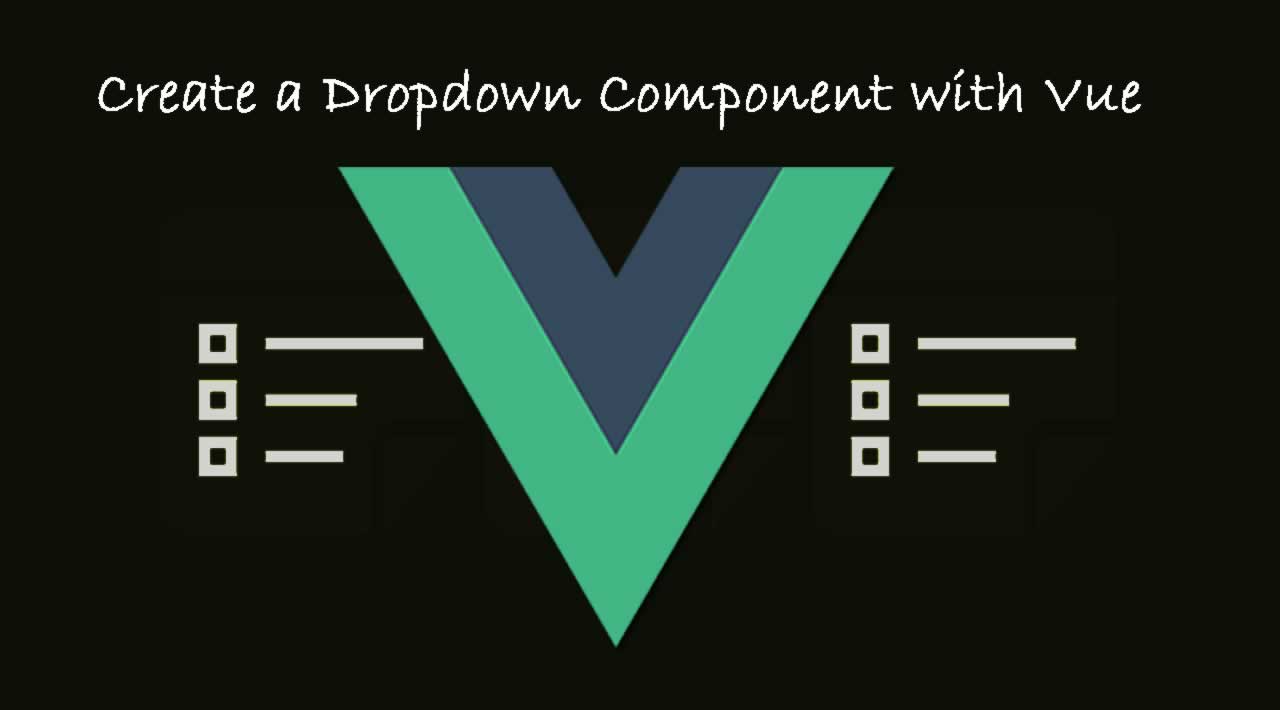How to Create a Dropdown Component with Vue
The most common way of making a dropdown in Vue has always been this way:
- First, you define a toggler (usually a
<button>or an<a>) with a click event that will call a toggle method. - You define the menu with a
v-ifdirective that is bound to an active state. - You define a method toggle that will be triggered when clicking on the toggler and change the active state to true and consequently show the menu.
<template>
<div v-if="active">
<slot/>
</div>
</template>
<script>
export default {
name: 'AppDropdownContent',
}
</script>
Now, this way of doing is totally working and there is nothing wrong doing it. The problem is that you would need to define an active state on every component that has a dropdown. This kind of defeat the purpose of vue and the reusability of components.
I will show you my way of making dropdowns in a clean and reusable way.
I’m going to assume that you already have a vue project set up. If not, I recommend creating one using the vue-cli
We’ll start by scaffolding out the structure of our dropdown component:
<template>
<div id="app">
<AppDropdown>
<template slot="toggler">
<button>Toggle</button>
</template>
<AppDropdownContent>
<AppDropdownItem>Action 1</AppDropdownItem>
<AppDropdownItem>Action 2</AppDropdownItem>
<AppDropdownItem>Action 3</AppDropdownItem>
</AppDropdownContent>
</AppDropdown>
</div>
</template>
<script>
import AppDropdown from './components/AppDropdown.vue'
import AppDropdownContent from './components/AppDropdownContent.vue'
import AppDropdownItem from './components/AppDropdownItem.vue'
export default {
name: 'app',
components: {
AppDropdown,
AppDropdownContent,
AppDropdownItem,
}
}
</script>
We will then create 3 components:
- The
AppDropdowncomponent, which will act as the wrapper component. It will contain both the toggler and the menu. - The
AppDropdownContentcomponent, which will act as the toggable menu. - The
AppDropdownItemcomponent, which will be the actionable item inside the menu.
Let’s open the AppDropdown.vue file and write some code.
In here we’ll define a <div> that will contain the whole dropdown. We’ll add a slot with the name “toggler” and a button inside of it which will act as the default button toggle if none is provided.
<template>
<div id="app">
<AppDropdown>
<template slot="toggler">
<button>Toggle</button>
</template>
<AppDropdownContent>
<AppDropdownItem>Action 1</AppDropdownItem>
<AppDropdownItem>Action 2</AppDropdownItem>
<AppDropdownItem>Action 3</AppDropdownItem>
</AppDropdownContent>
</AppDropdown>
</div>
</template>
<script>
import AppDropdown from './components/AppDropdown.vue'
import AppDropdownContent from './components/AppDropdownContent.vue'
import AppDropdownItem from './components/AppDropdownItem.vue'
export default {
name: 'app',
components: {
AppDropdown,
AppDropdownContent,
AppDropdownItem,
}
}
</script>
Now, let’s open the AppDropdownContent.vue file.
We’ll add a <div> which will wrap the menu and use the v-if directive to only display it when it is active.
<template>
<div v-if="active">
<slot/>
</div>
</template>
<script>
export default {
name: 'AppDropdownContent',
}
</script>
You might ask yourself: where is the active state coming from?
Here comes the fun part: We need the AppDropdownContent component to receive that value in some way. The most logical way would be from the main AppDropdown component itself. But how in the hell could we do this?
For that, we’ll use the amazing provide and inject features provided by Vue. In our case the AppDropdown will “provide” the active state and the AppDropdownContent will “inject” it in itself.
Let’s go back to our AppDropdown.vue file.
We’ll add a sharedState object to the data with the property active in it, that will be set as false by default. We’ll define a toggle() method, that will switch the active state. After that, we’ll add a @click event to the main div that will call the toggle() method. Finally, we’ll provide () the sharedState to every component inside the main AppDropdown component.
<template>
<div @click="toggle">
<slot name="toggler">
<button>Toggle</button>
</slot>
<slot/>
</div>
</template>
<script>
export default {
name: 'AppDropdown',
provide () {
return {
sharedState: this.sharedState
}
},
data () {
return {
sharedState: {
active: false
}
}
},
methods: {
toggle () {
this.sharedState.active = !this.sharedState.active
}
}
}
</script>
In the AppDropdownContent component, we now have the possibility to inject the sharedState provided by the AppDropdown. Let’s create a computed property active and set it’s value to the one sharedState provides.
<template>
<div v-if="active">
<slot/>
</div>
</template>
<script>
export default {
name: 'AppDropdownContent',
inject: ['sharedState'],
computed: {
active () {
return this.sharedState.active
}
}
}
</script>
You now how a fully working dropdown component that is fully customizable.
But wouldn’t be nice if you didn’t need to close it by clicking on the toggle again and just click outside of it?
Fortunately, there is this great plugin called vue-clickaway that allows us to do just this. Let’s install it: npm i vue-clickaway
NB: You might want to recompile your project after the install.
We’ll add the directive provided by vue-clickaway the AppDropdown. We’ll define an away()method and call it when click away is triggered.
<template>
<div @click="toggle" v-on-clickaway="away">
<slot name="toggler">
<button>Toggle</button>
</slot>
<slot/>
</div>
</template>
<script>
import { mixin as clickaway } from 'vue-clickaway';
export default {
name: 'AppDropdown',
mixins: [ clickaway ],
provide () {
return {
sharedState: this.sharedState
}
},
data () {
return {
sharedState: {
active: false
}
}
},
methods: {
toggle () {
this.sharedState.active = !this.sharedState.active
},
away () {
this.sharedState.active = false
}
}
}
</script>
And that’s it! Now, you can simply add some styles to the dropdown and make it look shiny. Like this:
Thanks for reading. Keep Visiting. If you liked this post, share it with all of your programming buddies!
Further reading
Originally published on medium.com by @Victor Rønnow
#vue-js #javascript #web-development
